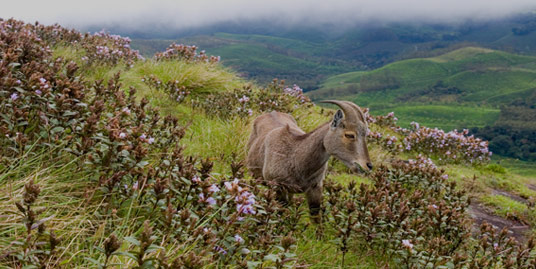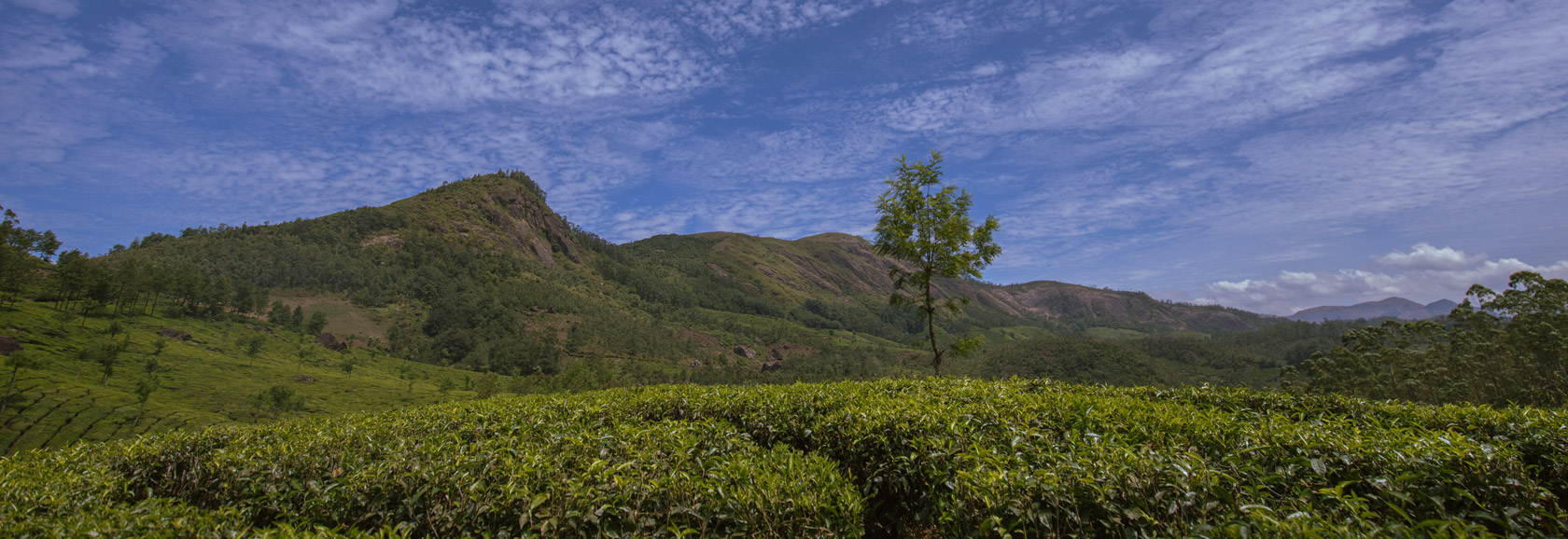

Blessings in Blue – A Rendezvous with the Neelakurinji
Espero, a glimpse into the world of an incurable romantic
-Pooja Sarath Chandran


Espero, a glimpse into the world of an incurable romantic
-Pooja Sarath Chandran

We woke up pretty early the next morning. Our excitement hadn’t let us sleep much.
Eravikulam National Park, the best place from which to witness the blue phenomenon is located in the High Ranges of the South Western Ghats. Spread over 97 sq.km the park consists mainly of high altitude grasslands that are sprinkled with the Sholas.
Not only is the Park home to the Neelakurinji but it also holds the largest viable population of the endangered Nilgiri Tahr alongside other little known fauna such as the Nilgiri Marten, Ruddy Mongoose, Small Clawed Otter and Dusky Striped Squirrel, etc.

The Park represents the largest and least disturbed stretch of Montane Shola Grassland vegetation in the Western Ghats. The unsuitability of the soil here for agriculture, inaccessibility and extreme climate have helped protect it from the ravages of human encroachment. The habitat of the Neelakurinji is restricted to the Shola grasslands of the Western Ghats which include the Eravikulam Hills of Munnar, Nilgiri Hills and the Palani Hills.
The tourism zone of the park, Rajamala, which gives one a taste of the Shola-Grassland ecosystem, is one of the ideal places, from which to view the gregarious flowering as it gives a panoramic view of the hillsides.
It also offers visitors the opportunity to observe the Nilgiri Tahr up close. With an estimated 700-800 Tahrs inhabiting the Park it is the largest wild population in the world.
There are over 45 species of Kurinji in Eravikulam, each with different timetables for blooming but none is said to command the awe that the Neelakurinji inspires.
Two ecotourism packages offer the Neelakurinji experience to travellers- the Kurinji Trail and the Rajamala Package.
We opted for the latter as we would get to see the Tahrs too.
We reached the parking lot of the Eravikulam National Park by 7.30am in time to get our tickets and catch a bus of the Forest Department to get to Rajamala. The Park is located around 7kms away from Munnar Town on the Munnar- Udumalpetta route. The drive upto Rajamala takes around 20 minutes though the scenery around makes it feel shorter.
Once we alighted from the bus we had to show our tickets at a check post before we were allowed to pass and walk ahead for around 1km until we reached another checkpost beyond which travellers weren’t permitted to venture.
With the rolling mists, the cold air and the orchestra of the jungle for company I couldn’t help but let down all guard and surrender myself to the embrace of Eravikulam.
A sudden movement to my right caught my attention and before I realised I was staring right at a Nilgiri Tahr, it leaped from one steep rock to another and vanished into the wilderness. My disappointment was short lived though as there were several more idling around watching our movements and posing for photographs.
“These Tahrs found here are rather friendly and tame unlike their wild counterparts,” said a forest guard standing nearby.
But his words fell flat on my ears as I stood open mouthed staring at the sight that lay in front of me.
As the mists slowly raised their veil over the landscape, gently nudged away by a subtle breeze, thousands of blue blossoms blushed into deeper tones of purple on seeing so many spectators.
It was almost like Mother Nature had gift-wrapped the hills and valleys in blue blooms!
Voila! What a sight!
There was the Neelakurinji in full splendour and I took my own sweet time to savour the sight which I knew would remain embedded in my heart unto death.
The small flower was unremarkable when looked at as an individual blossom but en masse, they transformed the very pulse and nature of the hills. It is no wonder that the Nilgiris got named in honour of the blue phenomenon (Nilgiris literally means ‘blue mountains’).
The Muthuvas of Munnar and the Todas of the Nilgiris, tribes indigenous to these parts consider the flowering of the Neelakuriji as auspicious. They even have beliefs that prevent them from destroying the plant or its withered twigs until the seeds mature 10 months later.
It is said that the forests in the surrounding areas yield large amounts of honey a few months after the blooming and that the honey, also known as Kurinji Honey, is especially dark brown in colour and sweeter too.
The tribes worship the Neelakurinji when it is in full bloom and once it withers, Millet flour is mixed with the Kurinji honey and offered to Lord Muruga.
As I stood staring wide eyed at the heavenly spectacle before me, I remembered one of the several interpretations for the flowering of the Neelakurinji that I had read recently.
Apparently in a Tamil classic poetic work the Neelakurinji represents the self awakening of womanhood, as in the Tamil tradition a girl is considered to attain sexual maturity at the age of 12.
Anyway, who would’ve thought that a tiny little flower could actually paint entire mountains in varying hues of purple, blue and mauve!
As the little plants nodded at me and the breeze brought to my ears their collective giggles and whispers, I couldn’t help but wonder.
Maybe that’s what this simple, unpretentious flower tries to tell us each time it blooms. That if we were to unite in our efforts towards conserving Nature and the world around us, we could make a phenomenal difference too.
If each of us were to put a little bit of an effort in the right direction, who knows, maybe, in due course of time the Neelakurinji wouldn’t have to fight to preserve its own habitat.
It won’t have to struggle to exist in our midst.
In life there are times when your heart will feel overwhelmed with joy, peace and gratitude. The magic of the Neelakurinji is one that fills your heart with such gratitude that it is guaranteed that you will leave the hills richer than when you found it.
But remember. This is one experience that should not be gulped down.
Rather, take a break, slow down, breathe, let go and savour it as gently as the mists that caress you on these sublime mountains.
“Hey, guess what?” Sarath saunters i ...more
Kumarakom, a part of the Kuttanadu region, is a pl ...more
One of the best features about Kumarakom is its cl ...more
The next morning was spent exploring spice gar ...more
The next morning after an early breakfast at t ...more
We woke up pretty early the next morning. Our exci ...more
Munnar offers both busy spots and seclude ...more